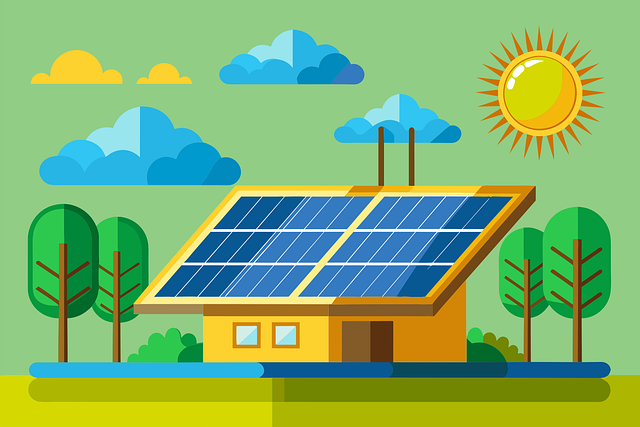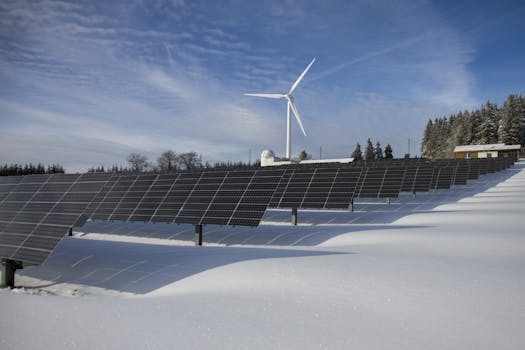“Maximize Your Solar Savings: Measure Inverter Efficiency for Optimal Performance!”
Measuring the efficiency of your solar inverter is crucial for assessing the performance of your solar energy system. The inverter plays a vital role in converting the direct current (DC) generated by solar panels into alternating current (AC) for use in homes and businesses. To determine its efficiency, you can compare the amount of DC power input from the solar panels to the AC power output delivered to your electrical system. This can be done using a combination of monitoring tools, such as a solar power meter or inverter monitoring software, which track energy production and consumption over time. Understanding the efficiency of your solar inverter not only helps in optimizing energy usage but also aids in identifying potential issues that may affect overall system performance.
Understanding Solar Inverter Efficiency Ratings
Understanding solar inverter efficiency ratings is crucial for anyone looking to maximize the performance of their solar energy system. Solar inverters play a pivotal role in converting the direct current (DC) generated by solar panels into alternating current (AC), which is the form of electricity used in homes and businesses. Therefore, the efficiency of an inverter directly impacts the overall energy output of a solar installation. To assess this efficiency, it is essential to familiarize oneself with the various ratings and metrics that define inverter performance.
One of the primary metrics used to evaluate solar inverter efficiency is the “maximum efficiency” rating. This figure represents the highest percentage of DC electricity that the inverter can convert into AC electricity under optimal conditions. Typically, modern solar inverters boast maximum efficiency ratings ranging from 95% to over 98%. However, it is important to note that these ratings are often achieved under ideal circumstances, such as specific temperature ranges and load conditions. Consequently, real-world performance may vary, and it is advisable to consider the “European Efficiency” rating, which provides a more realistic assessment of inverter performance across a range of operating conditions.
In addition to maximum and European efficiency ratings, the “weighted efficiency” rating is another critical factor to consider. This rating takes into account the inverter’s performance across various load levels, reflecting how well it operates under different conditions. Since solar energy production fluctuates throughout the day, an inverter that maintains high efficiency across a range of loads will be more beneficial for overall energy production. Therefore, when evaluating inverters, it is wise to look for those with high weighted efficiency ratings, as they indicate a more reliable performance throughout the day.
Moreover, the “CEC efficiency” rating, established by the California Energy Commission, is another valuable metric. This rating is particularly relevant for consumers in the United States, as it provides a standardized measure of inverter efficiency based on a specific testing protocol. The CEC efficiency rating is calculated using a weighted average of the inverter’s performance at various power levels, making it a useful tool for comparing different models. By focusing on inverters with high CEC efficiency ratings, consumers can ensure they are selecting products that will deliver optimal performance in real-world conditions.
It is also essential to consider the inverter’s temperature coefficient, which indicates how its efficiency is affected by temperature changes. Inverters typically operate less efficiently at higher temperatures, so understanding this coefficient can help users anticipate performance variations in different climates. A lower temperature coefficient signifies that the inverter will maintain its efficiency better in warmer conditions, which is particularly important for installations in hotter regions.
Finally, while efficiency ratings are critical, they should not be the sole factor in selecting a solar inverter. Other considerations, such as reliability, warranty, and manufacturer reputation, also play significant roles in ensuring a successful solar energy system. By combining an understanding of efficiency ratings with these additional factors, consumers can make informed decisions that will enhance the performance and longevity of their solar installations. In conclusion, grasping the nuances of solar inverter efficiency ratings is essential for optimizing energy production and ensuring a sustainable investment in solar technology.
Key Metrics for Evaluating Inverter Performance

When assessing the efficiency of your solar inverter, it is essential to focus on several key metrics that provide a comprehensive understanding of its performance. One of the primary metrics to consider is the inverter’s efficiency rating, which typically ranges from 90% to 98%. This rating indicates how effectively the inverter converts the direct current (DC) generated by solar panels into alternating current (AC) for use in your home or for feeding back into the grid. A higher efficiency rating signifies less energy loss during this conversion process, ultimately leading to greater energy savings and improved system performance.
Another critical metric is the maximum power point tracking (MPPT) efficiency. MPPT is a technology that optimizes the power output from solar panels by adjusting the electrical operating point of the modules. The MPPT efficiency is usually expressed as a percentage and reflects how well the inverter can maximize energy harvest under varying conditions, such as changes in sunlight intensity or temperature. A high MPPT efficiency indicates that the inverter is effectively capturing the maximum available energy from the solar panels, which is particularly important during fluctuating weather conditions.
In addition to efficiency ratings, it is also vital to consider the total harmonic distortion (THD) of the inverter. THD measures the distortion of the AC output waveform compared to a pure sine wave. A lower THD percentage indicates a cleaner output, which is crucial for the longevity of connected appliances and overall system performance. Ideally, a THD of less than 5% is desirable, as it minimizes the risk of overheating and potential damage to electrical devices.
Furthermore, the inverter’s reliability and durability are essential factors in evaluating its performance. This can be assessed through metrics such as mean time between failures (MTBF) and the manufacturer’s warranty period. A longer MTBF suggests that the inverter is built to last and can operate efficiently over an extended period. Additionally, a robust warranty, typically ranging from 5 to 10 years, can provide peace of mind, indicating that the manufacturer stands behind the product’s quality and performance.
Another important aspect to consider is the inverter’s monitoring capabilities. Many modern inverters come equipped with advanced monitoring systems that allow users to track performance metrics in real-time. This feature can be invaluable for identifying potential issues early on, ensuring that the system operates at peak efficiency. By analyzing data such as energy production, efficiency trends, and system alerts, users can make informed decisions about maintenance and optimization.
Lastly, it is essential to evaluate the inverter’s compatibility with your solar system and local grid requirements. This includes assessing whether the inverter can handle the total capacity of your solar array and whether it meets local regulations for grid connection. Ensuring compatibility not only enhances performance but also guarantees compliance with safety standards.
In conclusion, measuring the efficiency of your solar inverter involves a multifaceted approach that encompasses various key metrics. By focusing on efficiency ratings, MPPT efficiency, THD, reliability, monitoring capabilities, and compatibility, you can gain a thorough understanding of your inverter’s performance. This knowledge empowers you to make informed decisions that can enhance the overall efficiency of your solar energy system, ultimately leading to greater energy savings and a more sustainable future.
Tools and Techniques for Measuring Inverter Efficiency
Measuring the efficiency of your solar inverter is crucial for understanding how well your solar energy system is performing. To accurately assess this efficiency, various tools and techniques can be employed, each offering unique insights into the inverter’s operation. One of the most fundamental tools for measuring inverter efficiency is a power meter. This device can be connected to the output of the inverter to measure the amount of electrical power being produced. By comparing this output to the input power from the solar panels, you can calculate the efficiency of the inverter. Typically, inverter efficiency is expressed as a percentage, representing the ratio of output power to input power.
In addition to power meters, data loggers can provide a more comprehensive analysis of inverter performance over time. These devices record data at regular intervals, allowing you to track fluctuations in efficiency throughout the day and across different weather conditions. By analyzing this data, you can identify patterns and determine how external factors, such as temperature and sunlight intensity, affect inverter performance. This long-term data collection is invaluable for understanding the overall health of your solar energy system and can help in diagnosing potential issues.
Another effective technique for measuring inverter efficiency involves using a solar irradiance meter. This tool measures the amount of solar energy hitting the solar panels, providing a direct correlation between solar input and inverter output. By combining the readings from the solar irradiance meter with the power meter data, you can gain a clearer picture of how effectively your inverter converts solar energy into usable electricity. This method is particularly useful for identifying inefficiencies that may arise from shading, panel orientation, or other environmental factors.
Moreover, many modern inverters come equipped with built-in monitoring systems that provide real-time data on their performance. These systems often include features such as Wi-Fi connectivity, allowing you to access performance metrics remotely via a smartphone app or web portal. This convenience not only simplifies the monitoring process but also enables you to receive alerts about any performance issues, ensuring that you can address them promptly.
In addition to these tools, it is essential to conduct regular maintenance checks on your inverter. Over time, dust and debris can accumulate, potentially affecting its efficiency. Cleaning the inverter and ensuring that all connections are secure can help maintain optimal performance. Furthermore, keeping an eye on the inverter’s temperature is crucial, as excessive heat can lead to reduced efficiency and even damage. Many inverters have built-in temperature sensors that can alert you if the unit is overheating.
Finally, it is important to compare your inverter’s performance against industry standards and manufacturer specifications. Most manufacturers provide efficiency ratings for their products, which can serve as a benchmark for your measurements. By regularly assessing your inverter’s efficiency against these standards, you can ensure that it operates within expected parameters and make informed decisions about any necessary upgrades or replacements.
In conclusion, measuring the efficiency of your solar inverter involves a combination of tools and techniques, including power meters, data loggers, solar irradiance meters, and built-in monitoring systems. By employing these methods and maintaining your inverter, you can maximize the performance of your solar energy system and ensure that you are getting the most out of your investment.
Common Factors Affecting Solar Inverter Efficiency
When evaluating the efficiency of a solar inverter, it is essential to understand the various factors that can influence its performance. These factors can significantly impact how effectively the inverter converts the direct current (DC) generated by solar panels into alternating current (AC) for use in homes and businesses. One of the primary considerations is the inverter’s design and technology. Different types of inverters, such as string inverters, microinverters, and power optimizers, have distinct efficiencies based on their operational mechanisms. For instance, microinverters tend to perform better in shaded conditions, while string inverters may be more efficient in optimal sunlight scenarios. Therefore, selecting the right type of inverter for your specific installation is crucial for maximizing efficiency.
Another critical factor affecting inverter efficiency is temperature. Solar inverters operate within a specific temperature range, and their performance can degrade if they exceed this range. High temperatures can lead to increased resistance in electrical components, resulting in energy losses. Conversely, extremely low temperatures can also affect performance, albeit to a lesser extent. It is important to consider the installation environment and ensure that the inverter is adequately ventilated and protected from extreme weather conditions. This consideration not only enhances efficiency but also prolongs the lifespan of the inverter.
Moreover, the quality of the components used in the inverter plays a significant role in its overall efficiency. High-quality capacitors, inductors, and semiconductors can reduce energy losses during the conversion process. In contrast, lower-quality components may lead to inefficiencies and increased heat generation. Therefore, investing in a reputable brand with a proven track record of quality can yield better performance and reliability over time. Additionally, the inverter’s efficiency rating, often expressed as a percentage, provides a benchmark for its performance. It is advisable to look for inverters with high efficiency ratings, typically above 95%, as these will ensure that a greater proportion of the generated energy is converted for use.
Furthermore, the inverter’s operating conditions, including the input voltage and current, can also impact efficiency. Inverters are designed to operate optimally within specific voltage ranges. If the input voltage falls outside this range, the inverter may not function efficiently, leading to energy losses. Regular monitoring of the system’s performance can help identify any discrepancies in voltage and current, allowing for timely adjustments or maintenance.
In addition to these factors, the overall system design and configuration can influence inverter efficiency. The arrangement of solar panels, the length and quality of wiring, and the presence of shading can all affect how much energy is available for conversion. For instance, long wire runs can introduce resistance, leading to energy losses before the current even reaches the inverter. Therefore, ensuring that the solar array is optimally configured and that high-quality wiring is used can enhance overall system efficiency.
Lastly, regular maintenance and monitoring of the solar inverter are essential for sustaining its efficiency over time. Dust accumulation, wear and tear, and other environmental factors can hinder performance. By conducting routine inspections and cleaning, as well as utilizing monitoring systems to track performance metrics, users can ensure that their solar inverters operate at peak efficiency. In conclusion, understanding and addressing these common factors affecting solar inverter efficiency can lead to improved energy conversion, reduced losses, and ultimately, a more effective solar energy system.
Q&A
1. **Question:** What is the primary method to measure the efficiency of a solar inverter?
**Answer:** The primary method is to calculate the inverter efficiency by dividing the output power (in watts) by the input power (in watts) and multiplying by 100 to get a percentage.
2. **Question:** What tools are needed to measure the efficiency of a solar inverter?
**Answer:** You will need a power meter to measure the input and output power, as well as a data logger or monitoring system to track performance over time.
3. **Question:** What factors can affect the efficiency measurement of a solar inverter?
**Answer:** Factors include temperature, load conditions, inverter design, and the quality of the solar panels, as well as any losses in wiring and connections.
4. **Question:** How often should you measure the efficiency of your solar inverter?
**Answer:** It is recommended to measure the efficiency at least once a year or after significant changes in the solar system, such as maintenance or upgrades.
Conclusion
To measure the efficiency of your solar inverter, you can follow these steps:
1. **Calculate Input Power**: Measure the total DC power generated by the solar panels using a DC wattmeter or by calculating the output from the solar array based on its specifications and sunlight conditions.
2. **Measure Output Power**: Use an AC wattmeter to measure the AC power output from the inverter to the electrical system.
3. **Efficiency Calculation**: Use the formula: Efficiency (%) = (Output Power / Input Power) x 100.
4. **Consider Environmental Factors**: Take into account temperature, shading, and other environmental factors that may affect performance.
5. **Monitor Over Time**: Regularly monitor the inverter’s performance over different times of the day and under varying weather conditions to get a comprehensive understanding of its efficiency.
In conclusion, measuring the efficiency of your solar inverter involves calculating the input and output power, applying the efficiency formula, and considering environmental factors to ensure accurate results. Regular monitoring will provide insights into the inverter’s performance over time.




